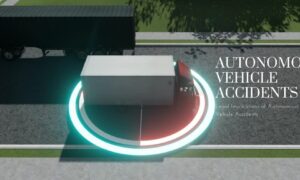Welcome aboard the express train to the future! Today, we embark on a thrilling journey that will take us into the captivating world of driverless train technology. From its humble beginnings to its remarkable advancements, this innovation has revolutionized how we travel and paved the way for a safer, more efficient transportation system. So fasten your seatbelts and prepare to be amazed as we dive deep into the genius behind these autonomous locomotives. Get ready to witness how cutting-edge engineering and groundbreaking artificial intelligence have come together to create an awe-inspiring spectacle that’s changing the way we see trains forever.
Introduction
Most people are familiar with the term “driverless car,” but few know that driverless trains are also a reality. Just as autonomous vehicles are changing the way we think about transportation, driverless trains have the potential to revolutionize rail travel. But what exactly is driverless train technology, and how does it work?
Driverless train technology enables trains to operate without a human conductor. This is made possible by a combination of sensors, computers, and software that can control the train’s speed and braking. Driverless trains have been used in various settings for many years, but they are only now starting to be used for passenger travel.
There are many potential benefits to driverless trains. For one, they can help improve safety by eliminating human error. They can also increase efficiency by reducing delays caused by things like signal problems or congestion. Additionally, driverless trains can free up manpower that can be better used elsewhere, such as on maintenance or customer service tasks.
One of the first examples of driverless train technology being used for passenger travel is the Docklands Light Railway (DLR) in London. The DLR has been using automated train operation (ATO) since 1987, and it now has a fully automated system in place. ATO involves drivers stopping at stations to open and close doors, but everything else—including acceleration, braking, and steering—is controlled by computers.
History of Driverless Train Technology
Since the early days of railways, trains have been operated by a driver in the locomotive, who is responsible for controlling the speed and direction of the train. However, with the advent of modern technology, it has become possible to develop driverless train systems.
Driverless train technology is not a new concept. In fact, it was first proposed in the early twentieth century, but it was not until the late 1990s that significant progress was made in its development. The first driverless train system was introduced on the London Underground’s Victoria Line in 1998. Since then, driverless train systems have been installed on several other rail networks around the world, including in Paris, Berlin, Madrid, and Sydney.
Who Invented the Driverless Train?
In 1804, George Stephenson invented the locomotive. However, it wasn’t until 1814 that Richard Trevithick built the first steam locomotive that could carry passengers. The first driverless train was invented in 1904 by George Westinghouse. This early version of the driverless train used a system of electric sensors and magnets to keep the train on track. The technology was later improved upon by other inventors, such as Frank J. Sprague, who developed a more reliable system of sensors and magnets that could be used to control the speed and braking of the train.
Challenges Faced in Developing This Technology
When it comes to rolling out driverless train technology, there are a few challenges that need to be considered. First, there is the issue of safety. Driverless trains need to be equipped with sophisticated sensors and software that can detect potential hazards on the tracks and in the surrounding environment. This requires significant investment in research and development.
Another challenge is the infrastructure required to support driverless trains. This includes dedicated tracks, signals, and communications systems. These need to be designed and installed before driverless train technology can be operational. This is a costly and time-consuming process.
There is the question of public acceptance. Many people are still uneasy about the idea of driverless trains. There needs to be a concerted effort to educate the public about the safety features of this technology and how it can benefit them. Only then will we see widespread adoption of driverless train technology.
The Future of Driverless Trains
The future of driverless trains is looking very bright. With the continuous development of technology, driverless trains are becoming more advanced and reliable. In the near future, we can expect to see driverless trains become the norm in many parts of the world.
There are many benefits to driverless train technology. For starters, it can help improve safety on our railways. Driver error is one of the leading causes of accidents on our railways, so by removing the human element from the equation, we can help to make our railways much safer.
Driverless train technology can also help improve efficiency and punctuality on our railways. By taking away the need for drivers, we can free up time and resources that can be used elsewhere on the railway network. This can help reduce delays and cancellations and make journeys quicker and smoother for passengers.
Innovation is key to keeping our railways moving forward. The introduction of driverless train technology is just one example of how we are constantly striving to improve and develop our railway network. So whatever the future holds for driverless trains, one thing is for sure: they are here to stay!
Conclusion
Driverless train technology is a relatively new concept, but it’s already making a huge impact on the way we travel. It has made rail transport safer, faster, and more efficient than ever before. As this technology continues to evolve and be refined, there are sure to be even more innovative developments that will revolutionize the way we get around. Innovation on track proves that when it comes to transportation solutions, anything is possible!



































